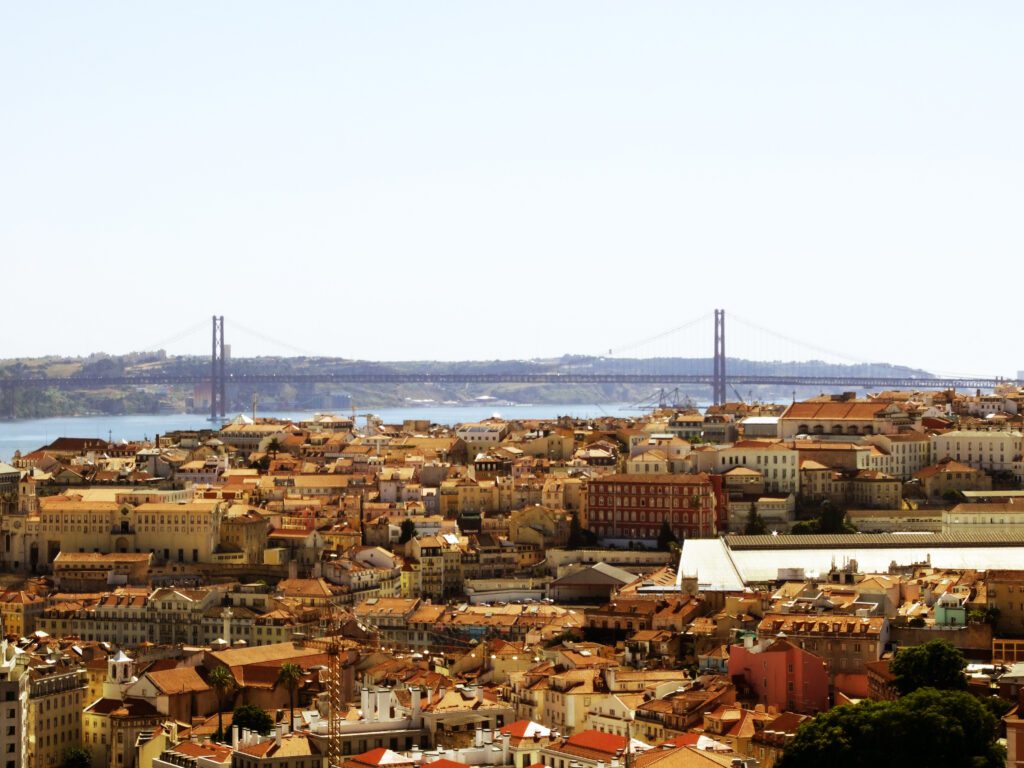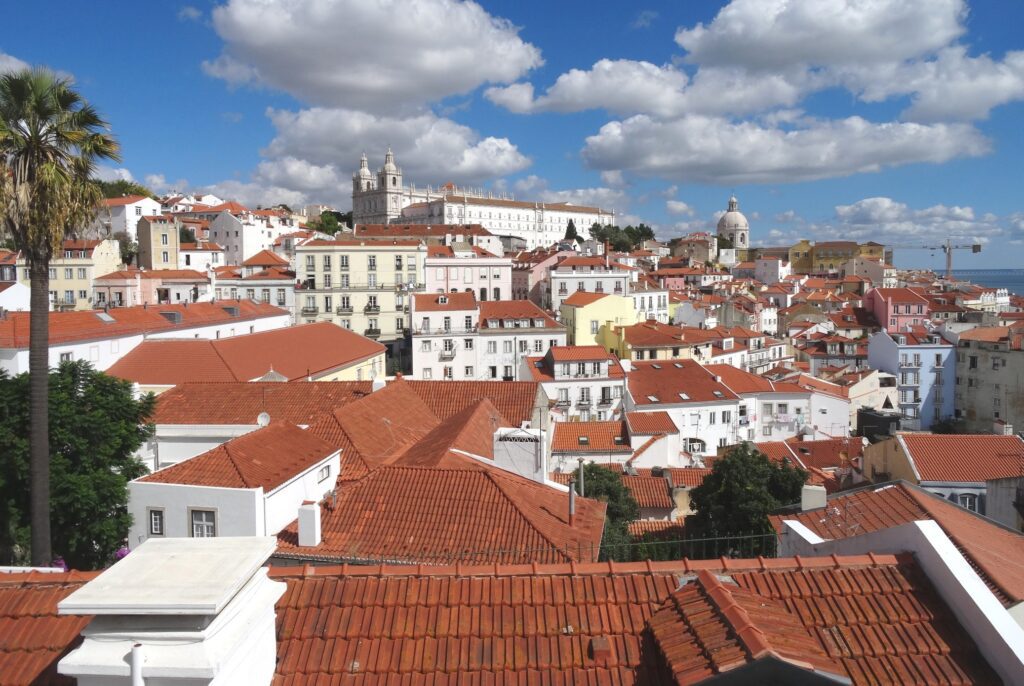

The country with the most western European geography has an Atlantic Ocean coastline and borders Spain to the north and east. Portugal and Morocco have a maritime border.
The country is somewhat smaller than Hungary (93,028 km2) or the US state of Indiana, with a total size of 92,090 km2.
10.3 million people make up Portugal’s population (as of 2020); Lisbon, the country’s largest city, is home to around 500,000 people. Portuguese is the official language here.
TRAVEL VISA REQUIREMENTS TO PORTUGAL
You must present particular papers at the Portuguese port of entry depending on your nationality. If you are an EEA citizen, you only need a form of identification to enter Portugal.
The following documents must be presented at the Portuguese port of entry if you are a visitor from outside the EEA and want to enter Portugal:
a valid passport or other travel authorization. valid for at least three more months after your anticipated departure date from Portugal/Schengen, issued within the last 10 years.
If you are required to obtain a visa by Portugal, you must do so.
In addition to these papers, the Portuguese border guard may inquire about your visit to Portugal in the following ways:
Why are you travelling to Portugal?
How much time do you plan to spend in Portugal?
Where will you be staying in Portugal? Etc.
You might be required to provide documentation to back up your claims, including a letter of invitation from a Portuguese host, evidence of lodging, or a round-trip ticket. Contact the Portuguese local consular offices in your native country for further details on this.
Remember that the border police has the last say in whether or not you are allowed to enter Portugal. After reviewing your documentation, the Portuguese border guard will decide whether you pose no risk to Portugal, and you will be allowed to enter Portugal and the Schengen area.
When entering Portugal, kindly ensure sure the border guard stamps your passport. If you leave Portugal without a stamp, you risk being fined or imprisoned.
GEOGRAPHY OF PORTUGAL
The colloquium intends to view the sea from several perspectives, including that of a huge network of mutually interacting societies and as a facilitator of economic, cultural, and artistic exchanges. The emphasis will be on how those who spent a significant portion of their lives at sea—not just sailors and fisherman, but also visitors, merchants, pilgrims, and residents of beaches and islands—perceive the marine environment. A particular focus will be placed on the ways that sailors and travellers projected their thoughts and hopes onto the coastal scenery. A number of these locations were aesthetically incorporated by buildings and structures imbued with religious significance, such as hermitages, modest chapels, churches, and monasteries. Promontories, anchorages, bays, and rocks served as essential visual markers. Sailors regarded this chain of shrines as a self-contained, homogenous sacred geography along the Mediterranean beaches as well as those of the Atlantic Ocean from the Algarve to the Netherlands. A very unusual litany, uttered by crews and passengers when the ships occurred to go off course on the open sea, reveals the perception of the water as a holy continuum. The “Sante Parole,” or “Holy Words,” as it is known in Italian, began with a brief prayer to God and the principal saints and was followed by a list of the shrines situated along sea shores, from Egypt to Spain and then down the Atlantic beaches from Portugal to England and Zealand. A selection of the most significant locations referenced in the litany will be illustrated in some of the lectures for the colloquium.
TRAVEL SAFETY IN PORTUGAL
Pickpocketing, car theft, and bag snatching are all common crimes. Keep expensive items hidden. Beaches, tourist destinations, and public transportation are places to be mindful of your personal property. The police have received reports of physical assaults related to pickpocketing. There are violent crimes including robberies and assaults. Another concern is the spiking of drinks. Avoid accepting drinks from random people or leaving unsecured drinks.
Be on the lookout for lodging frauds. These are increasing. Use official websites to make hotel reservations.
On the beaches of Portugal, people drown. Follow the instructions of the lifeguard. A red sign indicates danger; refrain from entering the water. Watch out for warnings concerning cliff erosion.
When strolling in urban areas, be mindful of the traditional Portuguese pavement. The mosaic stone pavements can be hazardous, particularly when it rains. Serious harm might happen. Avoid walking on slick pavement by staying off of the roadways; doing so could lead to serious collisions with vehicles, trams, and cyclists.
In the summer, bushfires frequently affect mainland Portugal. Keep an eye on regional media and heed the suggestions and directives of regional authorities.
Portugal’s winter months can see localized floods, especially in the cities. Keep an eye on the media and heed the guidance of regional authorities.
MONEY AND BANKS IN PORTUGAL
Portugal is a country with a long history of banking and financial services. Banking in Portugal has been an important part of the economy for centuries, with the country having one of the oldest banking systems in Europe. The Portuguese banking sector is highly competitive, offering a wide range of services and products to its customers. Banks in Portugal provide a variety of services such as savings accounts, loans, mortgages, investments, insurance policies and other financial services. They also offer online banking and mobile banking options to make it easier for customers to manage their finances. Money in Portugal is mainly made up of euro notes and coins which are used throughout the country.
FOOD AND DRINKS IN PORTUGAL
Portugal is known for its delicious and varied cuisine. From the seafood of the Atlantic coast to the hearty meat dishes of the interior, there is something to satisfy every palate. Traditional Portuguese food and drinks are heavily influenced by Portugal’s rich cultural history and its many immigrant populations. From succulent seafood dishes to rich wines, Portugal has a variety of flavors to offer visitors. In this article, we will explore some of the most popular food and drinks in Portugal that you should try during your visit.
CULTURE OF PORTUGAL
Portugal, which is sandwiched between Spain and the Atlantic Ocean, is renowned for both its abundance of seafood and its stunning beaches. Portugal is a beautiful country with old cathedrals and castles, rocky mountains, stunning beaches, peaceful forests, and scenic farmlands. Open-air product markets, folk festivals, and fado music performances can all be found in Portugal. Despite having a more liberal outlook than other western European countries, the Portuguese place more significance on religious beliefs. Punctuality is not as stressed in Portuguese culture since people and connections are valued more highly than time.
TRAVEL AROUND IN PORTUGAL
Portugal is a beautiful country with many different attractions, from stunning beaches to historic cities. With its varied landscape and rich culture, Portugal is the perfect place to explore. Travelling around Portugal can be done in a variety of ways, from taking public transportation to renting a car or motorbike. There are also plenty of options for those looking for an adventure-filled journey. Here are some tips on how to travel within Portugal so you can make the most out of your trip!
HOW TO REACH PORTUGAL
Portugal is a beautiful country located in the Iberian Peninsula of Europe. It has a rich culture and stunning landscapes, making it an ideal destination for tourists. Reaching Portugal is relatively easy and there are several ways to do so. Depending on your budget, you can choose from air travel, train travel, or driving by car. Each option has its own pros and cons that you should consider before deciding which one to take. In this article, we will discuss how to reach Portugal by air, train, or car and provide some tips on what to expect during your journey.
BEST TIME TO VISIT PORTUGAL
Portugal is a beautiful country that offers a wide range of activities and attractions for visitors. From stunning beaches to historic monuments, Portugal has something for everyone. The best time to visit Portugal depends on what type of experience you are looking for. If you want to enjoy the great outdoors, then spring and summer are the best times to visit Portugal as these months offer mild temperatures and plenty of sunshine. On the other hand, if you want to explore cities like Lisbon or Porto, then fall is the ideal season as temperatures are pleasant and there are fewer crowds. Regardless of when you choose to visit Portugal, it will be an unforgettable experience!




